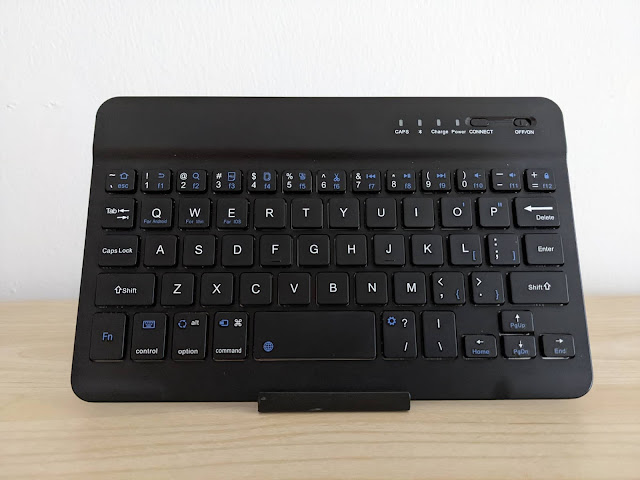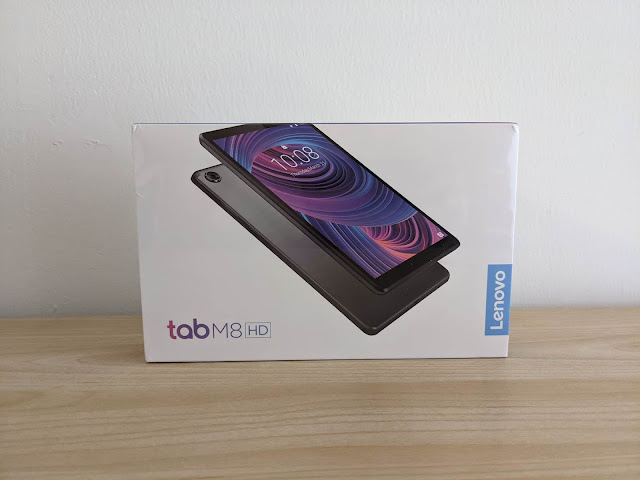My First Encounter With Android Bloatware
I’ve always heard about the bloatware vendors preinstall to their Android devices but never experienced it. Until now.
A few days ago I turned on my Lenovo Tab E7 tablet and an unknown icon showed up at the left edge of the home screen. You can see the icon in this screenshot.
Dragging the unknown icon to the right brought up a screen that resembles the home page of YouTube as shown here.
Tapping the icon featuring a head wearing headphones, at the top right of the YouTube screen, opened a Lenovo account sign in and sign up dialog. The YouTube screen slid onto the main home screen from the virtual screen immediately to the left of the main home screen. This spot, where Pixel devices have the Google Discover feed, is not usually accessible on my Lenovo Tab E7.
Along with the unknown icon, when turning on the device that day I got an Android system dialog requesting permission from the Lenovo launcher to manage phone calls, which I declined. And besides, I have no SIM card.
Another dialog, also apparently from Lenovo, requested permission to send data to improve Lenovo products. I declined this permission too.
This seemed some kind of Lenovo bloatware installed or activated by a system update. But an additional YouTube app is pointless as YouTube Go already comes preinstalled on the device. Another possibility was the source of the app was something malicious.
I posted to Reddit for help. After some troubleshooting, it turned out the unknown app is indeed bloatware, Lenovo Entertainment. Given the Lenovo dialogs, the permission requests, and other clues, this is likely a feature of the Lenovo launcher.
The good news is you can turn off the feature in the home screen settings. Long-tap the home screen, tap Settings, and turn off the Lenovo Entertainment option as in this screenshot.
I’ve always used Android devices by Google like Nexus and Pixel and wasn’t familiar with what preinstalled vendor apps looks like, so it puzzled me at first. Not getting bloatware is one of the major benefits of the pure Google experience it’s worth paying for.
A few days ago I turned on my Lenovo Tab E7 tablet and an unknown icon showed up at the left edge of the home screen. You can see the icon in this screenshot.
 |
| The unknown icon that showed up at the left side of the home screen of my Lenovo Tab E7 tablet. |
Dragging the unknown icon to the right brought up a screen that resembles the home page of YouTube as shown here.
 |
| Dragging the unknown icon to the right brought up the screen of the Lenovo Entertainment bloatware. |
Tapping the icon featuring a head wearing headphones, at the top right of the YouTube screen, opened a Lenovo account sign in and sign up dialog. The YouTube screen slid onto the main home screen from the virtual screen immediately to the left of the main home screen. This spot, where Pixel devices have the Google Discover feed, is not usually accessible on my Lenovo Tab E7.
Along with the unknown icon, when turning on the device that day I got an Android system dialog requesting permission from the Lenovo launcher to manage phone calls, which I declined. And besides, I have no SIM card.
Another dialog, also apparently from Lenovo, requested permission to send data to improve Lenovo products. I declined this permission too.
This seemed some kind of Lenovo bloatware installed or activated by a system update. But an additional YouTube app is pointless as YouTube Go already comes preinstalled on the device. Another possibility was the source of the app was something malicious.
I posted to Reddit for help. After some troubleshooting, it turned out the unknown app is indeed bloatware, Lenovo Entertainment. Given the Lenovo dialogs, the permission requests, and other clues, this is likely a feature of the Lenovo launcher.
The good news is you can turn off the feature in the home screen settings. Long-tap the home screen, tap Settings, and turn off the Lenovo Entertainment option as in this screenshot.
 |
| The home screen settings option to turn off Lenovo Entertainment. |
I’ve always used Android devices by Google like Nexus and Pixel and wasn’t familiar with what preinstalled vendor apps looks like, so it puzzled me at first. Not getting bloatware is one of the major benefits of the pure Google experience it’s worth paying for.


